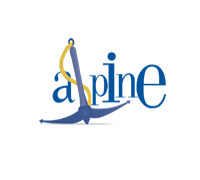
Newsletter - Publication 110
01st Sep 2021
|
|
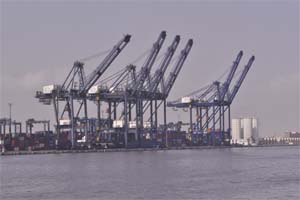
Pakistan ports’ cargo handling posts double-digit growth in FY21
Cargo handling activities at Karachi Port Trust (KPT) and Port Qasim Authority (PQA) recorded an impressive growth of 25 per cent and 13.72pc in FY21 owing to 18pc and 26pc rise in the country’s exports and imports, respectively. According to the Pakistan Bureau of Statistics (PBS), exports in FY21 soared to $25.3 billion from $22bn in FY20 while imports stood at $56bn as against $44.5bn in FY20, thus keeping goods movement at twin ports alive amid issues like lockdown, port congestion, higher freight charges, etc all over the world. A senior maritime official said despite Covid-related challenges, Pakistan’s trade remained progressive on the back of their achievement with an initiative of imposing smart lockdowns and keeping logistics moving. On the other hand, all Pakistani ports ensured business continuity and alleviate the pandemic impact on the maritime sector. However, the downside was the traditional ports facing congestion and efficiency issues in delivery service to the end-users and increase cost to shipping lines, whereas Hutchison Ports Pakistan (HPP), the only deep water container port, remained productive with its cutting-edge technology and modern infrastructure. This has helped other terminals and trade in reducing congestion impact by handling the extra vessel calls at HPP.
|
|
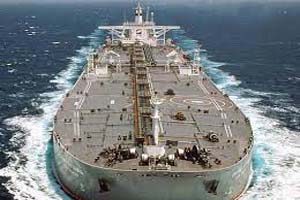
Govt urged to remove hurdles causing long wait for oil ships
The oil companies have asked the government to address on an urgent basis logistic constraints resulting in underutilisation of infrastructure at the ports and causing long wait for ships and economic losses to the oil companies and the country. In separate letters to the ministers of petroleum, energy and maritime affairs, the Oil Marketing Association of Pakistan (OMAP) said the government appeared to be targeting short-term quick fixes and day-to-day planning and that, too, haphazardly. “For a country beset with financial woes we can ill-afford the financial fallout due to lack of coordination between key stakeholders resulting in ill-conceived planning and the resultant negative fallout,” wrote OMAP Chief Executive Officer. The OMAP, representing about two dozen oil marketing companies (OMCs), has also asked the government to put in place an inter-ministerial forum of key energy sector stakeholders – Petroleum Division, Power Division and Maritime Affairs and their relevant entities – to forecast the need for petroleum products, gas and electricity and plan operational arrangements to avoid repeated episodes of shortages and over-production. Pakistan imports 70 per cent of motor spirit (petrol) and 50pc of high speed diesel (HSD) needs. Except for Attock Refinery located at Rawalpindi, all the four other refineries (NRL, PRL, and Byco at Karachi and PARCO Mid-country at Multan) are about 90pc dependent on imported crude. Collectively referred to as petroleum oil liquids, these are all received by sea through the ports.
|
|
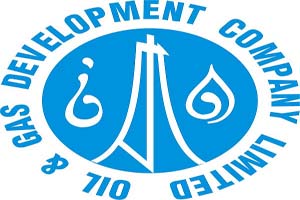
OGDC awarded five oil, gas exploration licences
The government on 16th August awarded five licences to the state-run Oil & Gas Development Company (OGDC) for exploration in Punjab, Khyber Pakhtunkhwa and Sindh provinces, with an investment of around $13.32 million in three years. The Petroleum Concession Agreements (PCAs) and Exploration Licences (ELs) include Block No 3372-26 (Hazro), Block No 2972-7 (Vehari), Block No 2972-8 (Sutlej), Block No 2668-23 (Khewari East) and Block No 3471-1 (Nowshera). Hazro Block covering an area of 653.74 sq km is located in the districts of Attock, Swabi and Haripur of Punjab and Khyber Pakhtunkhwa. Vehari Block covering an area of 2,487.28 sq km is located in the districts of Bahawalpur, Vehari and Lodhran in Punjab. Sutlej Block covering an area of 2,312.56 sq km is located in Bahawalpur, Bahawalnagar, Vehari and Khanewal districts. Khewari East covering an area of 1,451.53 sq km is located in Khairpur district of Sindh while the Nowshera Block covering an area of 1,711.06 sq km is located in Charsadda, Mardan, Swabi and Nowshera districts in KP. Minimum firm work commitment for these blocks is $13.32m over a period of three years. The company is obligated to spend a minimum of $30,000 per year in each block on social welfare schemes. Annual social welfare obligation in respect of these five blocks is $150,000. The OGDC’s share of total oil and gas production in the country is 47pc and 29pc, respectively. The company is the operator of 46 exploration licences and holds working interest in seven other exploration blocks operated by various other E&P companies. The company is currently producing 36,058 barrel oil per day of crude oil, 1,023 million cubic feet per day of gas, 778 tonnes of liquefied petroleum gas and 51 tonnes of sulphur per day.
|
|
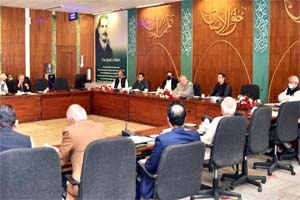
Govt allows $400m venture in Abu Dhabi
The government has allowed a consortium of the country’s leading petroleum exploration and development (E&P) companies in the public sector to go for a $400 million exploration attempt in Abu Dhabi, United Arab Emirates. The decision was taken at a meeting of the Economic Coordination Committee (ECC) of the Cabinet presided over by Finance Minister. It approved a summary of the “Petroleum Division regarding no objection certificate for issuance of the parent company guarantees/corporate guarantees by each of the consortium companies, on a joint and several basis, in favour of Abu Dhabi National Oil Company (Adnoc) and the Supreme Council for the Financial and Economic Affairs (SCFEA) to pursue international exploration and production opportunity in Abu Dhabi, UAE,” said an official statement. The country’s three oil and gas majors – Oil & Gas Development Company Ltd (OGDCL), Pakistan Petroleum Ltd (PPL) and Mari Petroleum Company Ltd (MPCL) in collaboration with Government Holdings Pvt Ltd (GHPL) have formed a special purpose vehicle (SPV) to have 25pc shareholding ($100m) each in the $400m over a period of five years in the UAE exploration block. The ECC decision would allow these four companies to issue guarantees to the SPV called NewCo in favour of Adnoc and SCFEA to qualify for the exploration block for which bid has already been submitted by the consortium. Although the blocks offered by Adnoc fall in the prolific area known for its rich hydrocarbon reservoirs nonetheless in case of no discovery the total exposure will be borne by the consortium of four participating E&P companies without any liability on the part of the GoP.
|
|

Local mobile phone production exceeds imports
The country manufactured 12.27 million mobile phones compared to the imports of 8.29m sets during the first seven months of 2021, data released by the Pakistan Telecommunication Authority (PTA) showed. However, 2G compatible sets continue to dominate local manufacturing compared to smartphones production in the country. Out of the 12.27m mobile phones locally manufactured between January and July, only 4.87m were 4G compatible smartphones, whereas the bulk of 7.4m mobile phones sets were 2G technology. Responding to a query, a manufacturer said the trend was changing and the ratio between the smartphones and old 2G technology-based sets will narrow in the coming months. In the year 2020, only 2.06m smartphones were manufactured in Pakistan against 10.98m 2G sets. This year, almost 5m smart phones have already been rolled out and the gap with 2G sets is not too wide. Till now, 26 companies have been issued MDM authorisation enabling them to manufacture mobile devices in Pakistan. These include renowned brands such as Samsung, Nokia, Oppo, Tecno, Infinix, Vgotel, Q-mobile etc.
|
|
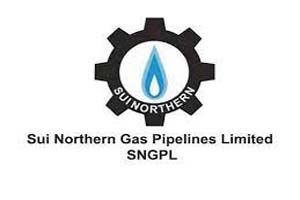
RLNG share in total supply surges to 55pc: SNGPL
The Sui Northern Gas Pipelines Limited (SNGPL) has said that its Re-gasified Liquefied Natural Gas (RLNG) consumption accounts for 55 per cent of the total supplies due to a massive decline in the indigenous supplies, which is increasing its dependence on RLNG. “The country’s indigenous supplies are continually decreasing and its gas supplies now comprise around 55pc RLNG. The dependence on such gas will therefore continue to increase for being cheaper than alternate fuels,” SNGPL Managing Director said while speaking at a corporate briefing the company organised for analysts, investors and shareholders. “The government is also planning to introduce the weighted average cost of gas, which will mitigate and reduce the high price of RLNG for the public.” The management briefed the audience that the company’s share in the country’s overall energy mix is around 30pc, while its share in the gas sector is approximately 70pc, including supply of RLNG to meet the energy demands of the country. At the session arranged at the Pakistan Stock Exchange in Karachi, the MD briefed the audience about the vision 2025, financial performance and future outlook of SNGPL.
|
|
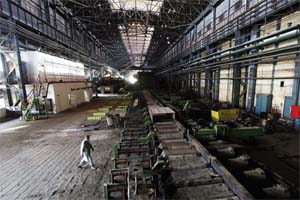
Criteria for Pakistan Steel revival approved
The Board of Privatisation Commission (PC) on 27th August approved documents pertaining to the pre-qualification criteria of investors for the revival of Pakistan Steel Mills Corporation (PSMC). The board meeting, chaired by Minister for Privatisation, approved the Request for Statement of Qualification (RSOQ) and Expression of Interest (EOI) documents. In light of the federal cabinet’s decision, PC will invite EOI after filing of scheme arrangement (SOA) by Pakistan Steel Mills with the Securities & Exchange Commission of Pakistan. In view of the decision of the cabinet committee, EOI for investors would be invited for the purpose the pre-qualification of investors. The draft document containing eligibility criteria along with basis of disqualification for the potential investors was placed before the PC Board for deliberation and approval. According to the approved transaction features approved by the Cabinet Committee on Privatisation (CCoP), the identified core operating assets would be transferred to the new subsidiary owned by PSMC named Steel Corp (Pvt) Ltd, and then the divestment of equity stakes of the subsidiary will be 51 to 74 per cent through bidding process. The revival of PSM is one of the important objectives of privatisation plan. The mill is not working since 2015. There have been consecutive meetings with the stakeholders and ministries to resolve the issues,
|
|
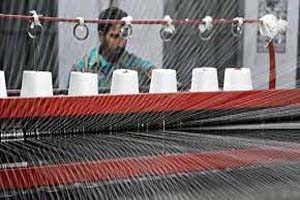
Textile exports rise 15pc in July
Pakistan’s textile and clothing exports posted double-digit growth in the first month of this fiscal year increasing by 15.61 per cent to $1.471 billion compared to $1.272bn in July 2020, data released by the Pakistan Bureau of Statistics showed. The easing of lockdown in North American and European countries — top markets for Pakistani textile goods — will help boost the exports. The demand for textiles collapsed during the first wave of Covid-19, but it recovered in the outgoing fiscal year. The government has drastically reduced duty and taxes on imports of several hundred raw materials to bring down the input cost of exportable products. Moreover, the liquidity issues are also resolved to a large extent by timely releasing refunds. In the outgoing fiscal year, the commerce ministry released a total of Rs6bn under DLTL schemes. This included Rs5.6bn for textile and Rs400m for non-textile sectors. The ministry believes it will contribute to improving the liquidity issues of exporters and enable them to enhance Pakistan’s exports. The overall country’s exports posted a growth of over 16.94pc year-on-year to $2.728bn in July compared to $2bn in the corresponding period last year.
|
|
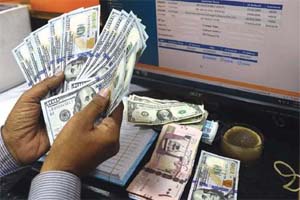
Profit repatriation by overseas investors down 55pc
Overseas investors repatriated profits of $159.2 million in the first month of 2021-22 (FY22), down 55 per cent from the corresponding month of the preceding fiscal year, according to data released by the State Bank of Pakistan (SBP). The sharp drop in repatriation follows an annual increase of 20.5pc in the total outflow of profits in 2020-21 as foreign investors transferred $1.6 billion abroad. A disproportionately high share in the total repatriation was of the payment of profits on foreign direct investment (FDI) as opposed to foreign portfolio investment (FPI). Of the total $159.2m, repatriation on FDI constituted 88.6pc in July. Local laws allow 100pc foreign ownership of companies and impose no limits on the repatriation of profits to attract overseas investors. The profit repatriation on FDI amounted to $141.1m, which was notably higher than the net FDI of $89.9m that the country received in the same month. The repatriated profits of the telecommunications sector in July were $62.5m, up 2.1pc from a year ago. The food packaging sector sent abroad a total of $26.8m in July as opposed to zero outflows registered in the same month of 2020. Other sectors that recorded notable repatriations in the period under review were financial businesses ($23.3m) and chemicals ($13.8m). However, experts are of opinion that one month’s data reflecting a drop in the profit repatriation does not point to any long-term trend, as repatriations are directly linked to corporate earnings.
|
|
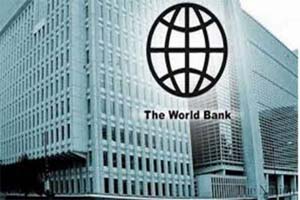
Pakistan aims to improve its ranking to 75th position from 108th
Pakistan envisions a big jump in World Bank’s doing business report 2023 to improve its ranking to 75th position from current 108th. The Board of Investment in collaboration with the World Bank Group launched 7th Reform Action Plan on Aug 25. “The 7th Reform Action Plan is mainly focusing on improvements in firm entry regulations, reliability of electricity, tax regulations, trade regulations, creditors’ rights, better property rights, and court efficiency etc. as reforms in these areas play a major role in accelerating economic development,” stated Secretary Board of Investment (BOI). During last two years Pakistan had advanced 39 places to secure 108th place on the ease of doing business global ranking. While discussing how the recent initiatives facilitated ease of doing business, she mentioned that the companies’ registration through SECP has shown a 63% growth and 99% of these registrations were done online while 45% applicants were issued registration certificates on the same day.
|
|
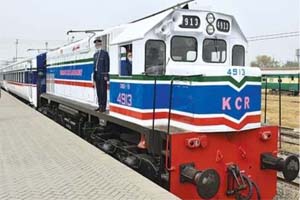
KCR groundbreaking to take place in Sept
Federal Minister for Planning, Development and Special Initiatives has directed Pakistan Railways to complete all the formalities at the earliest and ensure necessary arrangements are made for the groundbreaking of Karachi Circular Railway (KCR) infrastructure by September 2021. While chairing a meeting to review the latest status of KCR and railways freight corridor projects, he said that simultaneous work on PPP components of the KCR would result in months of time saving and completion of the project. So, the railways should expedite consultation with P3A(Public Private Partnership Authority). The minister was briefed on the KCR and told that the KCR scheme envisaged construction of a 43km-long world-class affordable mass transit system by using environment-friendly electric trains. The railways secretary emphasised that the KCR project was on track as per the timelines given by the ministry. Meeting participants also held discussion on the freight corridor project from Keamari/KPT to Pipri Marshalling Yard, which involved the construction/ dualisation/ upgrading of a 50km dedicated freight corridor from Karachi Port to Pipri and the development of an inland container depot/ Marshalling Yard at Pipri. The meeting was briefed that the project was expected to facilitate 40% of the cargo meant to be transported upcountry. Furthermore, the plan has been submitted to the Public Private Partnership (PPP) Authority for approval. Minister gave directives that the corridor must be designed for optimising the outcome, and in addition to the financial cost, the destination time should be reduced as well.
|
|
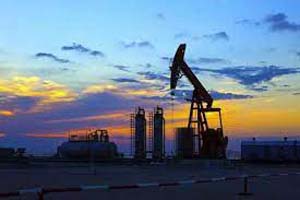
Local POL production increase 18.05% in FY 2020-21
The overall production of petroleum commodities has witnessed an increase of 18.05 percent during the fiscal year 2020-21 as compared to corresponding period of last year. The POL products that showed positive growth include Kerosene Oil the production of which increased by 9.12 percent during the period under review, Pakistan Bureau of Statistics (PBS) reported. Similarly, the production of Motor Spirits, High Speed Diesel, Furnace Oil, Jute Batching Oil, Liquefied Petroleum Gas (LPG) and Petroleum NOS witnessing increase of 27.61 percent, 23.92 percent, 14.65 percent, 11.13 percent, 11.13 percent, 15.08 percent respectively. However, the production of Jet Fuel Oil has decreased by 16.19 percent, Diesel oil percent, Solvent Naptha 4.20 percent during the period under review. On year-on-year basis, the petroleum production has witnessed an increase of 38.93 percent during June 2021 as compared to the output of June 2020.
|
|
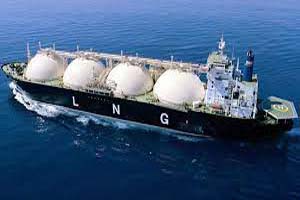
Govt eyeing alternatives as LNG supply disruption seems imminent
As another major supply disruption of liquefied natural gas (LNG) looms large, the government is looking for legally safe and commercially viable alternatives to allow continuation of ‘larger replacement regasification terminal’ currently operating in Port Qasim as a fait accompli to avoid major power shortfalls and have greater gas availability during winters. Engro Elengy Terminal Limited (EETL) has told the government entities that due to exchange of its Floating Storage and Regasification Unit (FSRU), there will be complete disruption of regasification process for 60 to 90 hours between Sept 7 and 11. EETL had taken out its original FSRU, Exquisite, on June 28-29 for unavoidable maintenance and replaced it with a relatively larger ‘replacement terminal’, Sequoia, causing LNG disruption for a few days. The EETL has been asking the government and Sui Southern Gas Company Limited (SSGCL) for the last few years to allow a larger ship to replace Exquisite to enhance its regasification capacity, with additional capacity for private sales to other LNG consumers. Because of ongoing investigations by the National Accountability Bureau (NAB) and related cases in courts on account of capacity enhancement from 400 to 600 million cubic feet per day, the SSGCL and petroleum division had been resisting such a permission that is not part of the original service or supply agreements. A major setback to gas supplies twice and that too in summer results in poor public image of a political government, an official said. The situation on ground, however, is that EETL has given two options on an immediate basis. “Complete regasification stoppage for 60 hours (causing 1.6 billion cubic feet gas shortage)” in case the Exquisite Vessel comes back LNG laden or 91 hours (2.445 BCF shortage) in case it returns unladen. Sui Northern Gas Pipelines Limited (SNGPL) has already raised ‘red flags’ that it had firm downstream agreements with three major LNG-based power plants of about 4,000mw as per pre-approved Annual Delivery Plan (ADP) based on back to back consultations with all supply chain partners, including planned terminal outages. Drop in RLNG to these power plants other than ADP are legally treated as non-supply and involve heavy capacity payments and liquidity damages.
|
|
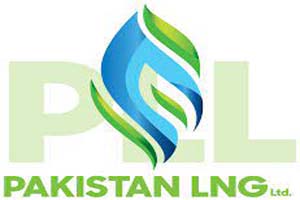
PLL receives expensive bids for LNG cargoes
In yet another round of spot tendering, Pakistan received very expensive bids for seven cargoes of Liquefied Natural Gas (LNG) deliveries in October and November that may have to be rejected by the board of directors of state-run Pakistan LNG Ltd (PLL). Bids opened by the PLL, a total of three bidders were technically qualified for seven LNG cargoes between Oct 7 and Nov 27. Together they submitted a total of 10 bids — one by PetroChina, two by Total Gas & Power and seven by Vitol Bahrain. PetroChina made the highest bid of $25 per unit for Oct 27-28 delivery slot. Informed sources said the PLL would have to go for second round of bidding on a short notice as it had done in the past as well and was able to get lower rates a few months ago. These sources said these bids had been invited under procurement rules that required 30-day notice and bid validity for 15 days. Not only the offers were fewer, the bid rates were on the higher side as no bidder could hold the vessel for such a long time or would charge a premium. The PLL, sources said, was insisting on complete exemption from procurement rules for import of LNG as other countries had done to commensurate with LNG spot market dynamics.
|
|

Car CKD/SKD kits import bill surges to $1.1bn in FY21
Pakistan spends a handsome amount on bringing in auto parts from abroad for the aftermaket every year. However, the imports of completely and semi-knocked down (CKD) kits for the local assembly of cars surged to an all-time high of over $1 billion in FY21. In contrast, the country’s auto parts exports have remained negligible in the last decade. As per data of the Pakistan Bureau of Statistics (PBS), exports of auto parts and accessories have been on the downward trajectory after achieving the highest $28 million in 2011-12 and since then it has been struggling between $13-24m every year. CKD/SKD import bill in FY21 hit $1.120bn from $478m in FY20, up by 134.35pc owing to almost 100pc increase in arrivals under a government concessionary package in Auto Policy 2016-2021. To some extent, existing players are also importing CKD/SKD kits for new models being rolled out with low volume of locally made parts. However, car assemblers claim to have achieved higher localisation. Car sales had swelled by 57pc in FY21 over FY20 followed by 104pc hike in July over July 2020. With huge advance booking orders in the hands of new entrants and old auto players, import of CKD/SKD kits is likely to remain high in the first half of FY22.
|
|
|

© 2021 Alpine Marine Services Private Limited
all rights reserved
|
|